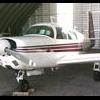Running a tank dry in flight
-
Members Online
- RangerM20
- 1980Mooney
- BeeBuzzbee
- redbaron1982
- Lois
- TreetopMooney
- IvanP
- PT20J
- Bob Weber
- kortopates
- varlajo
- hammdo
- McMooney
- Bolter
- katzhome
- Igor_U
- KSMooniac
- exM20K
- MikeOH
- BDPetersen
- turbofan
- amillet
- atpdave
- richardbrochu27
- Rotorhead
- Stealth Mooney
- Jose Jo
- AndreiC
- TheBearFlies
- Bartman
- Rick Junkin
- ElkoRandy20J
- fsuflyer
- Dgeyer
- Buckeyechuck
- marcusku
- Yanyen
- bencpeters
- Guillaume
- takair
- TNIndy
- ohdub


Recommended Posts
Join the conversation
You can post now and register later. If you have an account, sign in now to post with your account.